|
|
Кацусика Хокусай. Тридцать шесть видов Фудзи: № 14. Мост Сэндзю в провинции Мусаси
Katsushika Hokusai. Senju in Musashi Province, from the series Thirty-six Views of Mount Fuji
冨嶽三十六景 武州千住Senju in Musashi Province (Bushū Senju), from the series Thirty-six Views of Mount Fuji (Fugaku sanjūrokkei)Artist: Katsushika Hokusai (1760–1849)Period: Edo period (1615–1868)Date: ca. 1830–32
Senju was a post town that is believed to be the first one on the highways of Nikko-dochu and Oshu-dochu. The town prospered as one of the major postal station in Edo Distirict. Hokusai portrays a farmer with a horse and the angler hand seemingly over the shade looking up to The Mount Fuji. They may be talking about the panoramic view of the mountain as the horse walks leisurely. The geometrical sluice gate is drawn in front to highlight the beauty of the mountain. (metmuseum)
The print represents a view of Mount Fuji from Senju, the northern suburb of Edo. The river, which rises in the Kantö Mountains, changes name over its course. In this area, some miles upstream, it was called the Arakawa River. Fuji is seen here across the Arakawa beyond rice fields in the middle ground. Although not represented in the print, the so-named Great Bridge spanned the Arakawa at Senju, where the highway to Mutsu province in the far north originated. Senju was thus a gateway to the north, with its streets full of inns, shops, restaurants, and travelers. In the foreground, on the bank of a canal leading to Arakawa, a horseman appears, leading his aging, tired horse. Momentarily he gazes at the beautiful cone of Fuji. Two seated men are fishing at the edge of the canal. Hokusai's usual geometric treatment of his composition is obvious in this print. The horse's bent stance resembles the triangle of Fuji, and the weighted rein draws a line that echoes the rise and fall of the rounded hills. The rectangular elements of the flood-gate (suimon) rise to make a screen for the river and for Fuji. The print is also evocative; one cannot help feeling empathy for the tired horse. The turtle, its tail tied to the rein, may be one that the horseman caught on the way to take home as his children’s pet. The key-block was printed in blue. (The Asian Art Museum of San Francisco, HOKUSAI AND HIROSHIGE – Great Japanese Prints from the James A. Michener Collection, Honolulu Academy of Arts: The Asian Art Museum of San Francisco, 1998 Page 61. Cat. 12)
Senju was an important suburb of Edo, and a departure point for journeys to the north. As a result, it was a bustling district filled with shops providing services to travelers. However, Hokusai shows an out-of-the-way corner with a view looking out beyond rice fields to the Arakawa (Ara River) and Mount Fuji in the distance. Sitting above a canal, two fishermen look out over the expanse, joined by a man leading his tired horse past a floodgate that frames the volcano. The hapless turtle tied to the horse’s rein might be intended as a gift for the man’s children. Hokusai used the strong vertical lines of the floodgate to prevent his landscape from becoming flat. He often employed devices such as this to emphasize the distance between the foreground and the view in the distance. “Hokusai’s Summit: Thirty-six Views of Mount Fuji” (09/24/2009-01/06/2010)
Мост Сэндзю в провинции Мусаси
Мост Сэндзю, наведенный над рекой Сумида, является важным перевалочным пунктом по дороге из Эдо в Китаканто, район Оу. В этом листе мастер применяет свои излюбленные художественные приемы, связанные с национальной пейзажной традицией: сопоставление форм, композиционный, цветовой повтор.
Хокусай показал мост Сэндзю и городок, построенный около этого моста по дороге в Никко. Зритель видит следующего по мосту человека с лошадью, вероятно, идущего в Синагава. Хокусай избегает здесь изображений шумного города, а показывает крестьян, которые мирно ловят рыбу в реке. Наше внимание привлекает далекий пейзаж с видом Фудзи. На краю моста, сквозь его сваи открывается прекрасный вид на Фудзи. Перед ней синеет плотина Аракава.
Поравнявшись с силуэтом Фудзи, лошадь, несущая на спине мешок с сеном, словно склонилась в поклоне. Линия, которую образуют поводья с привязанными к ним варадзи (японские традиционные сандалии), повторяет контур горы, но перевернутой Фудзи. Образованный таким образом треугольник перекликается с образом Фудзи. Это говорит о том, что Хокусай свободно владеет формой, демонстрируя зачастую превосходного чувство юмора.
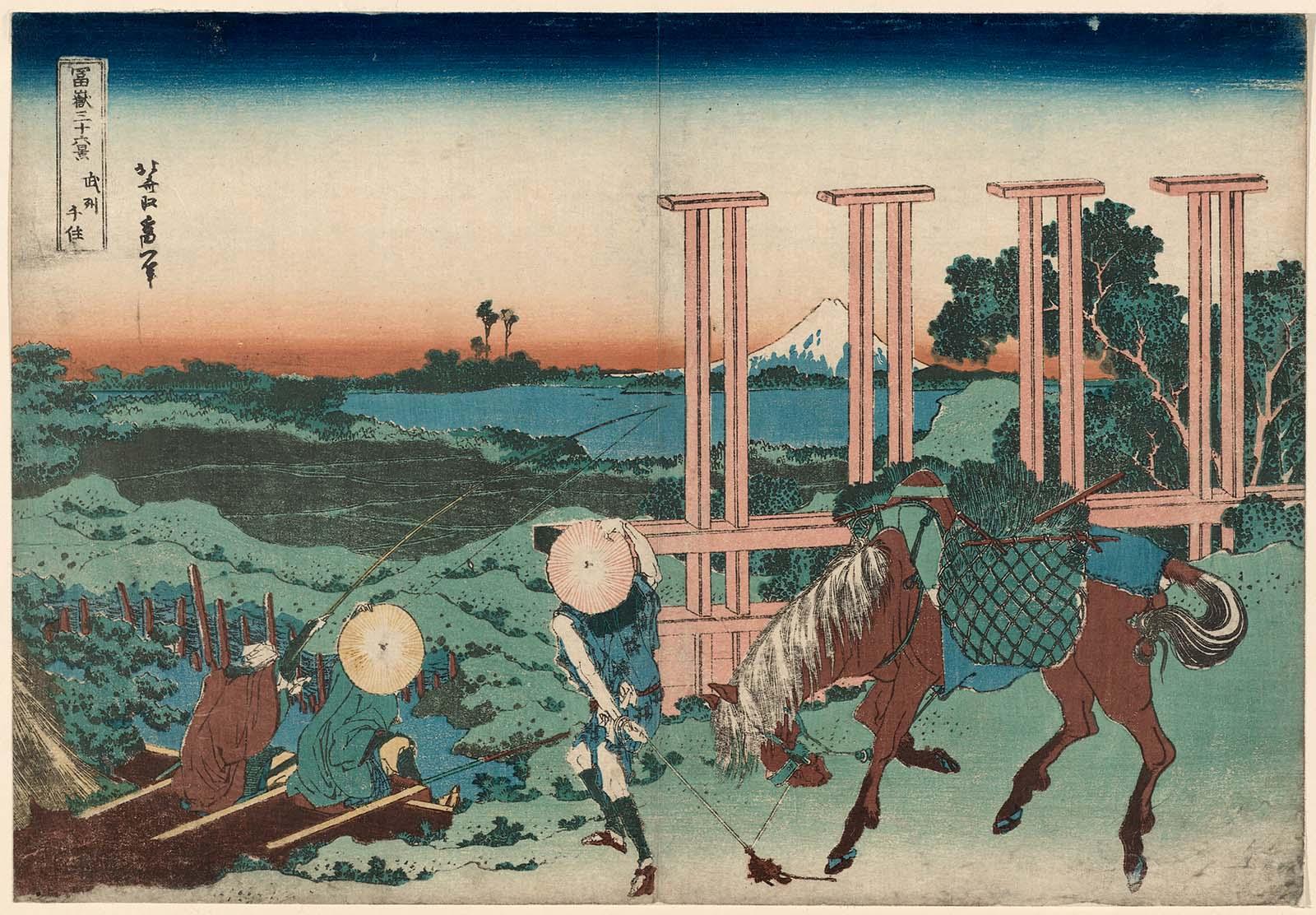
Katsushika Hokusai. Senju in Musashi Province, from the series Thirty-six Views of Mount Fuji
Все 46 гравюр серии «Тридцать шесть видов Фудзи» | Thirty-six Views of Mount Fuji | 富嶽三十六景 | Fugaku Sanjūrokkei
14 сентября 2022, 10:00
0 комментариев
|
Партнёры
|
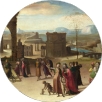
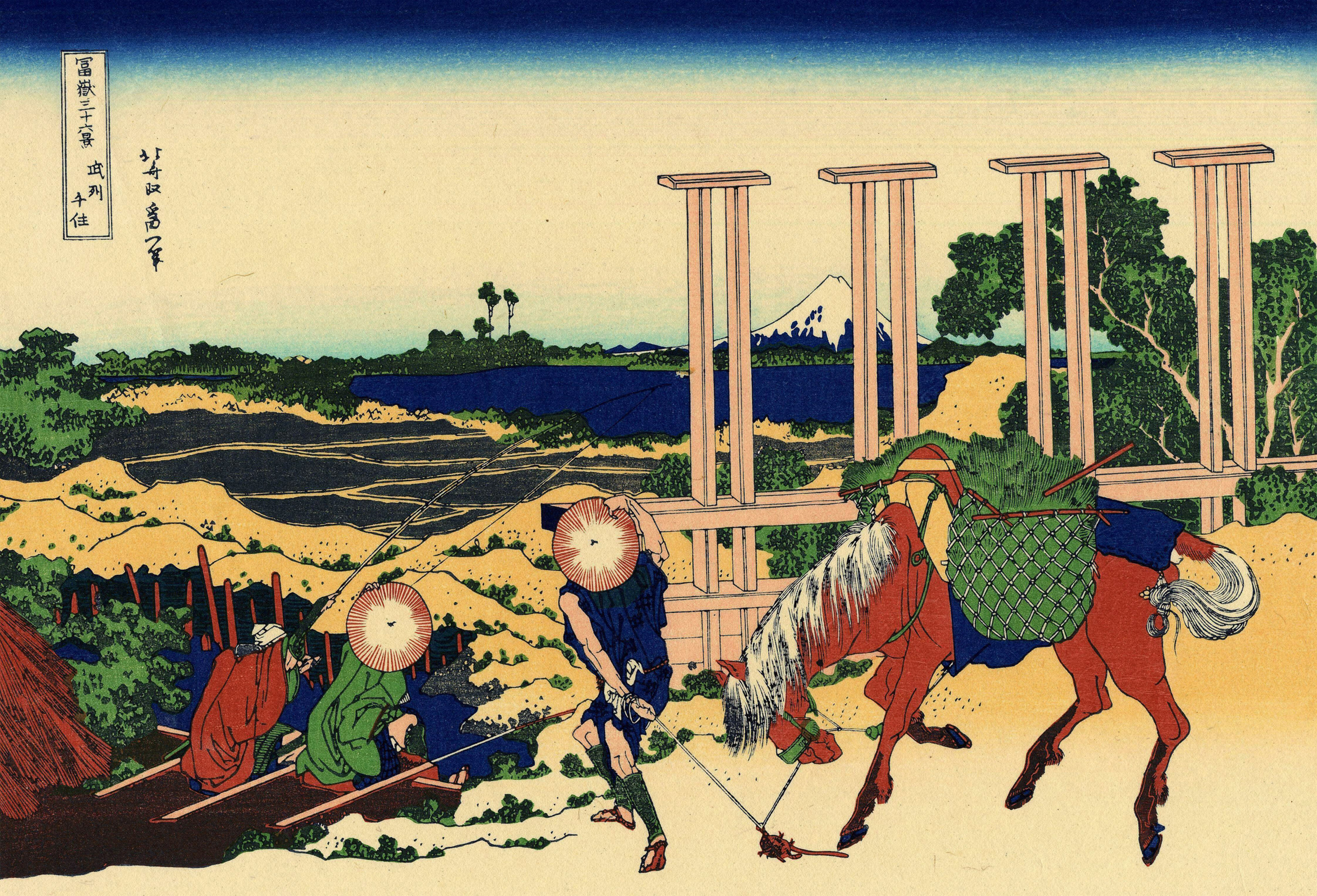
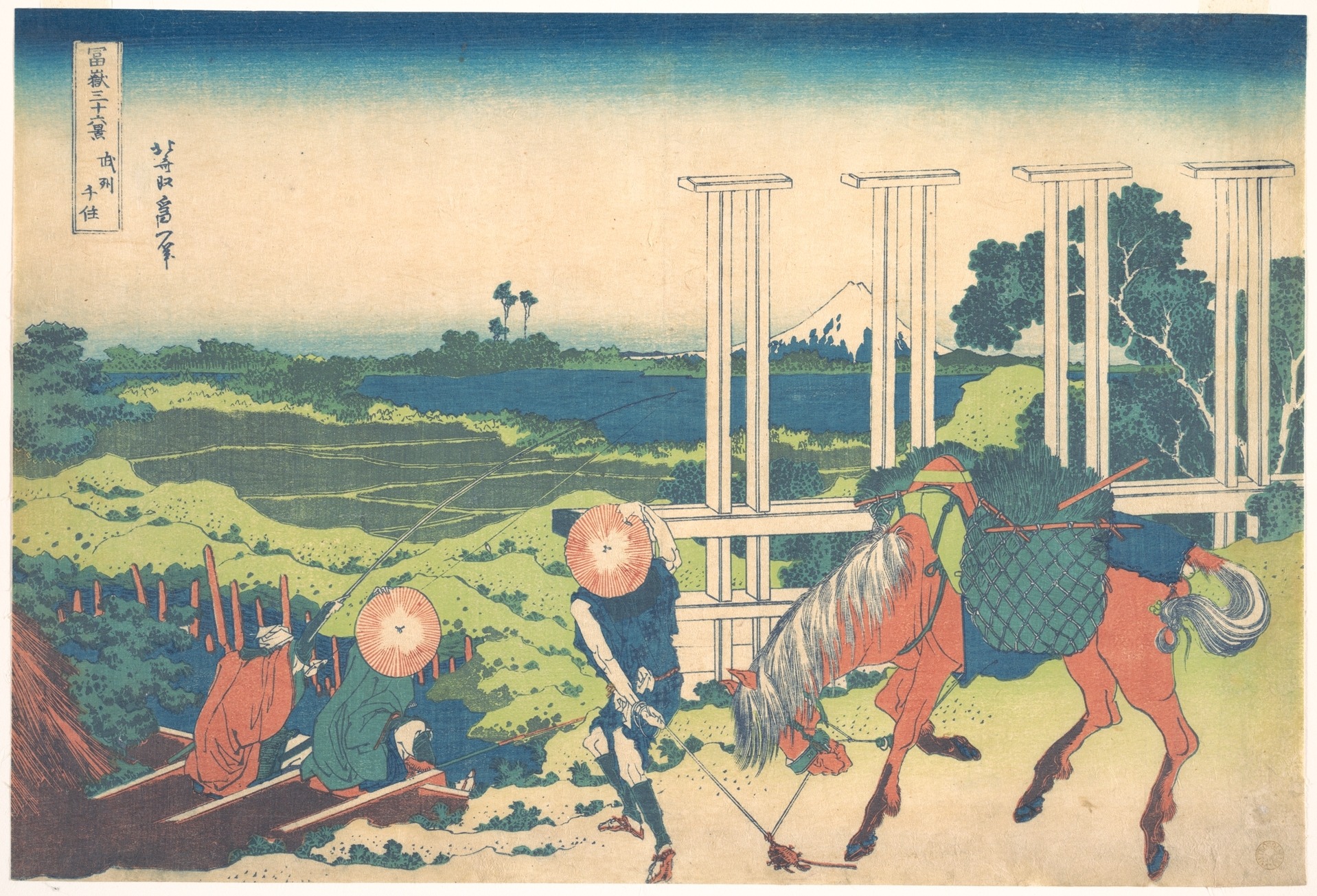
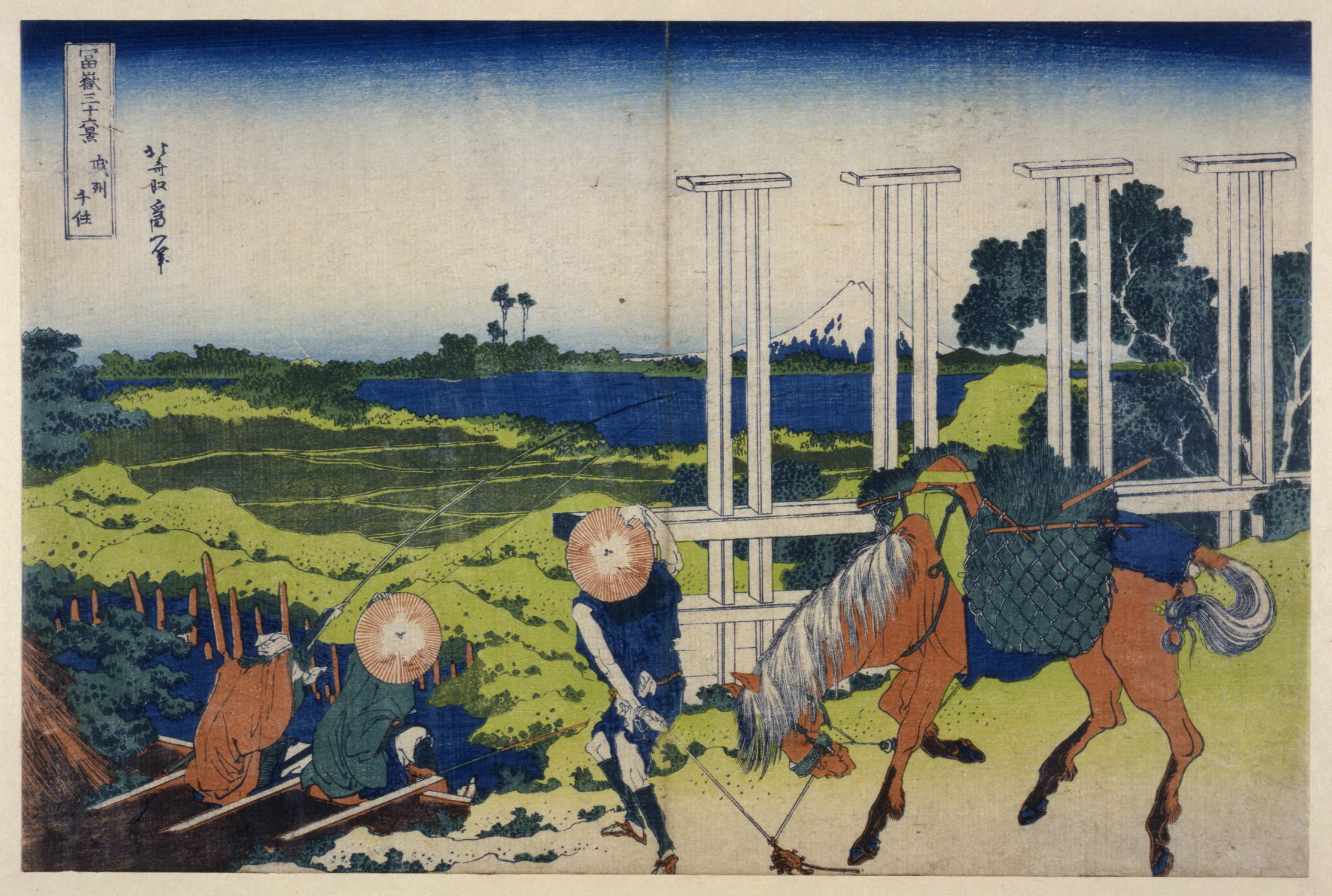
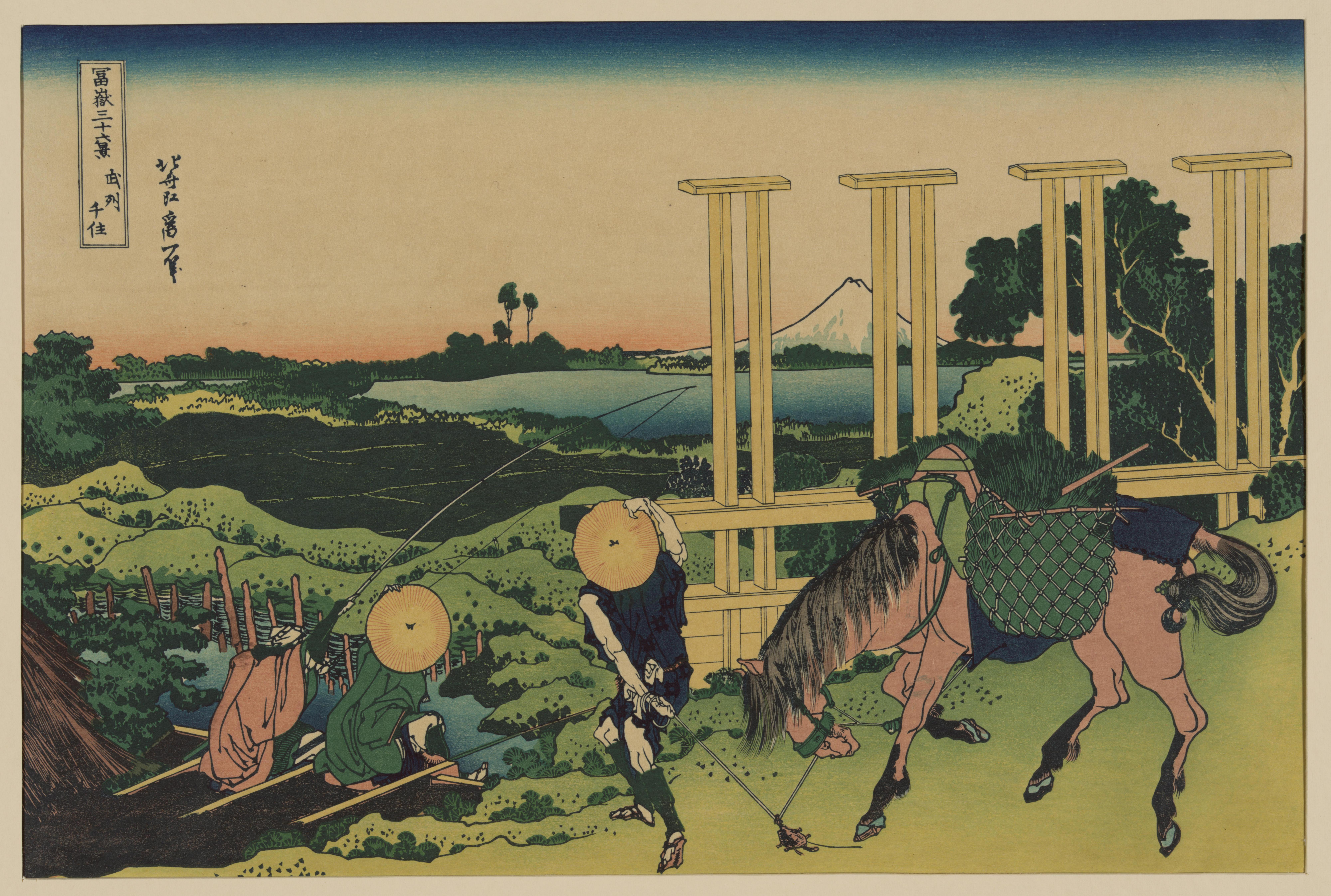
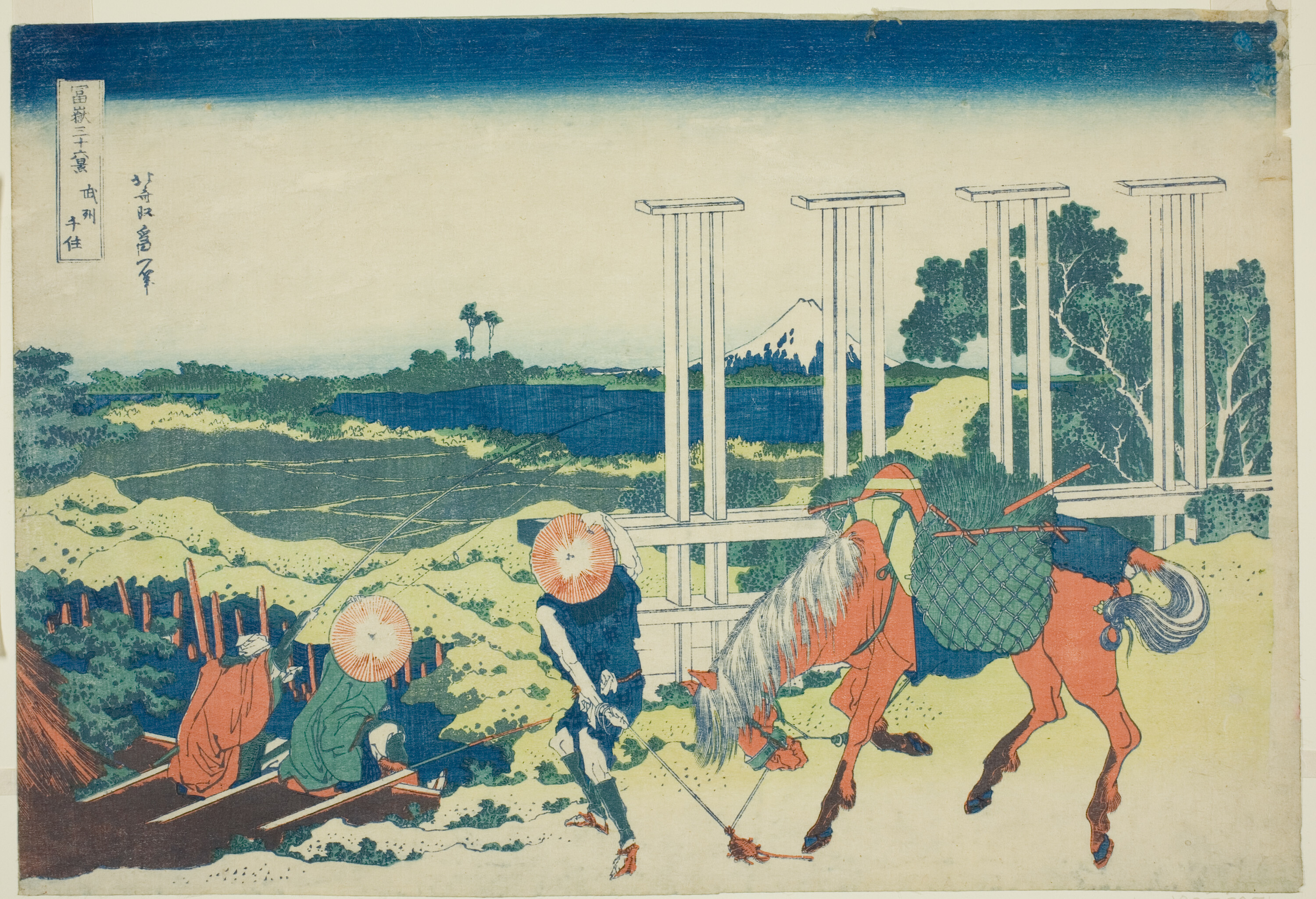
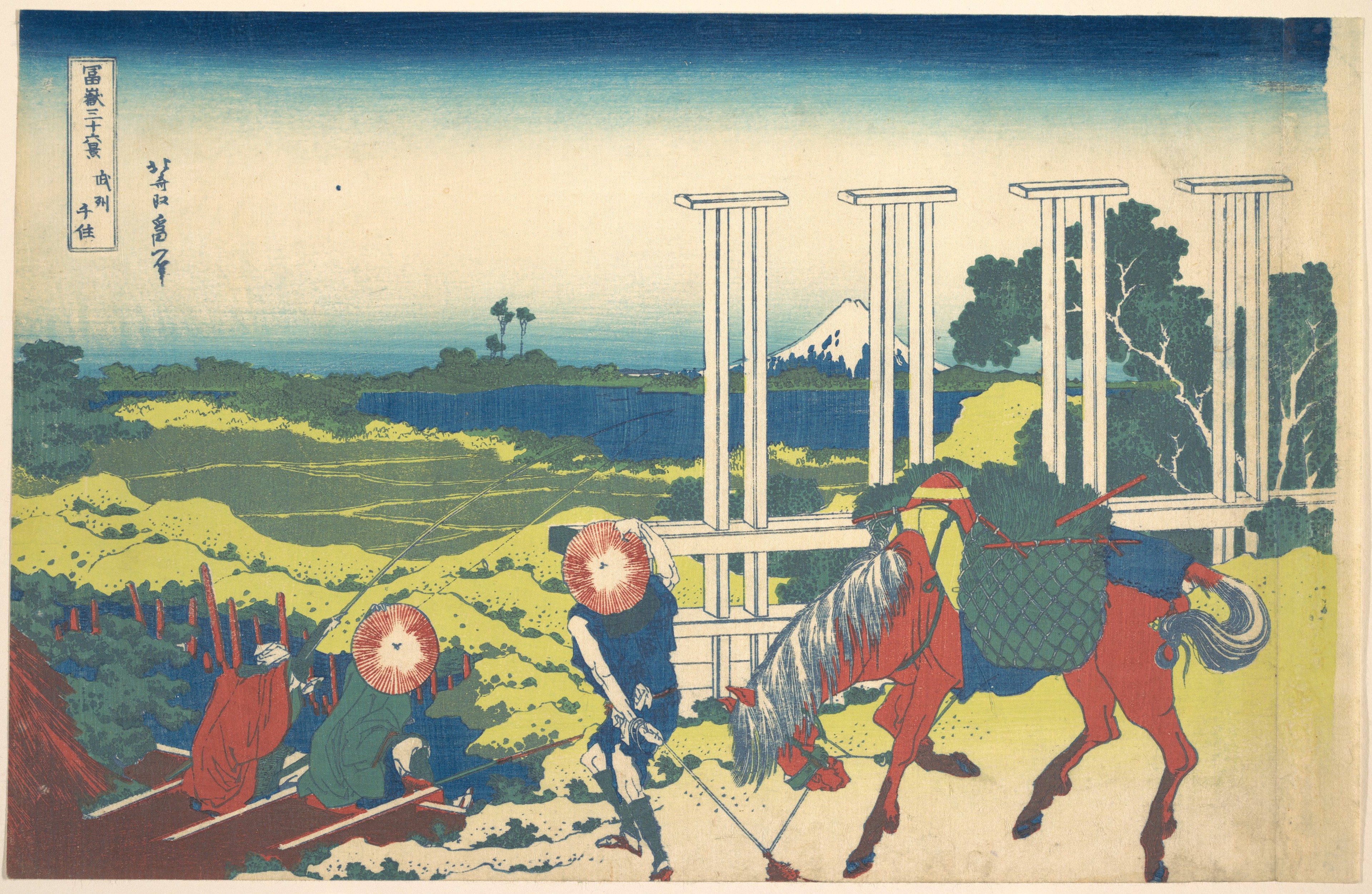
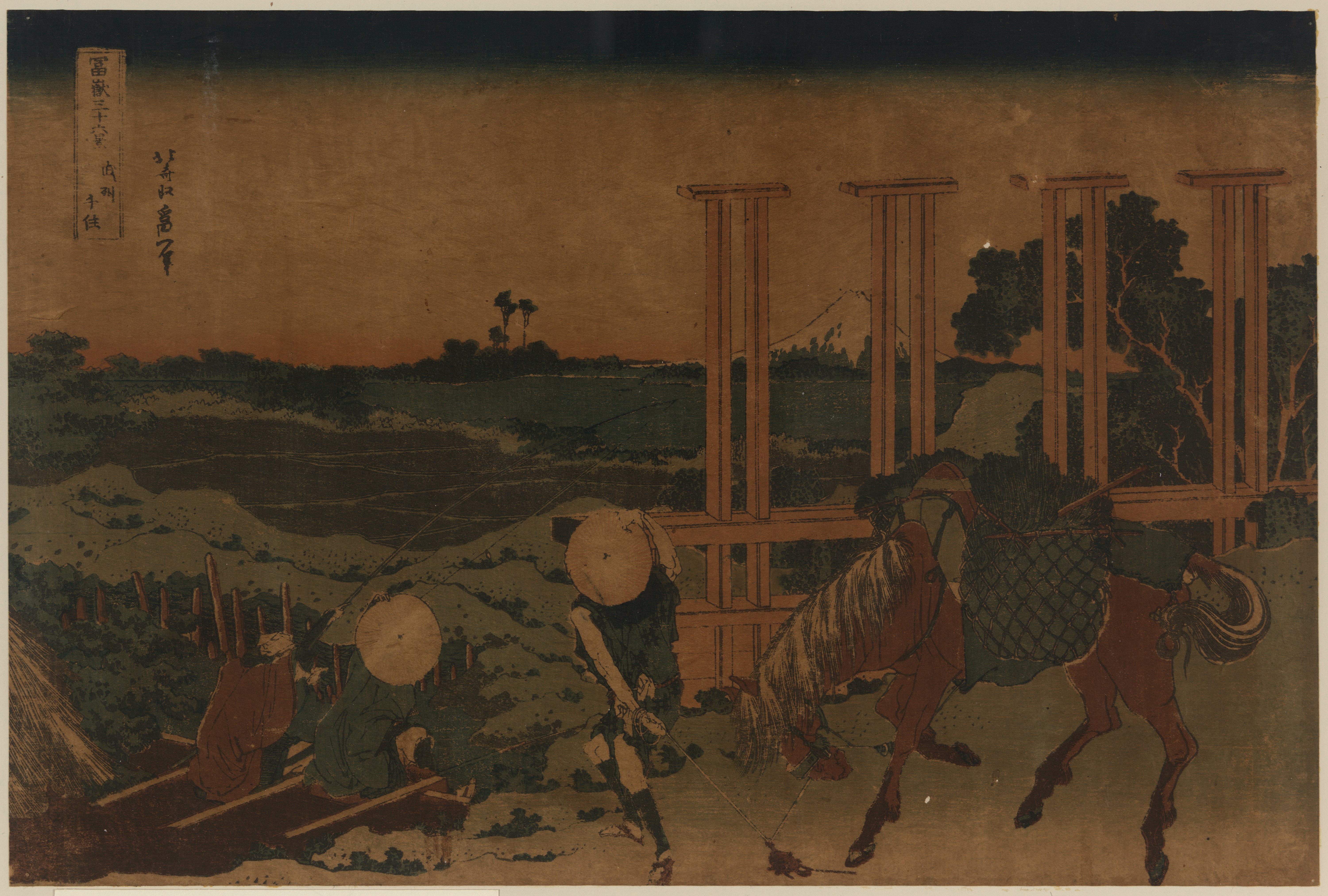
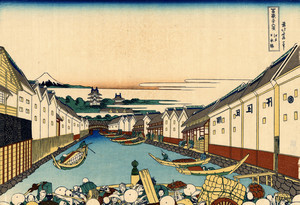
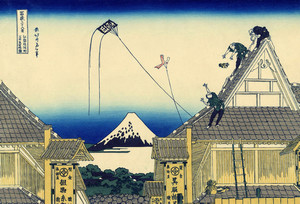
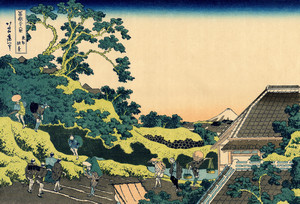
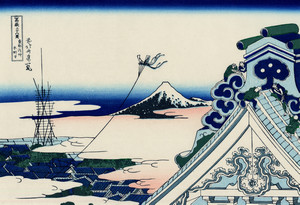
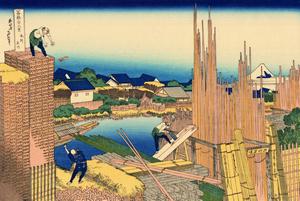
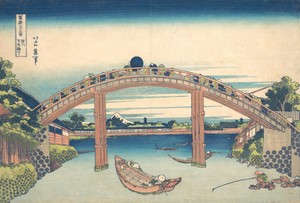
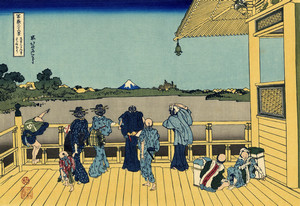
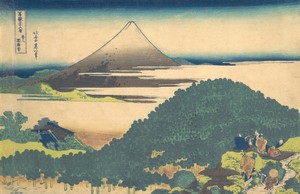
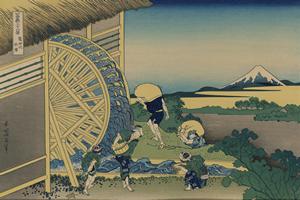
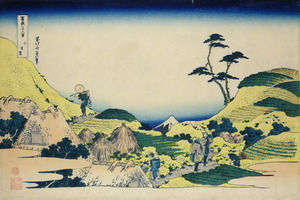
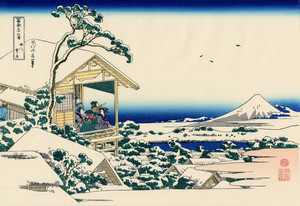
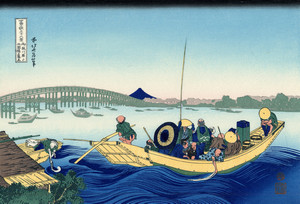
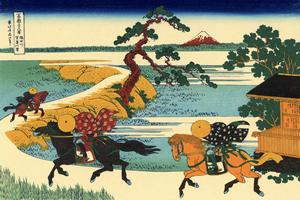
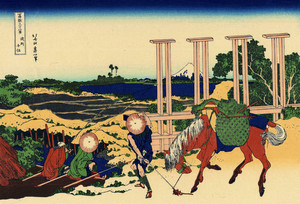
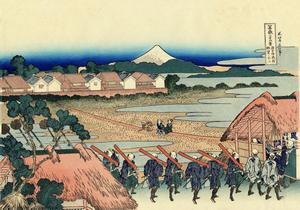

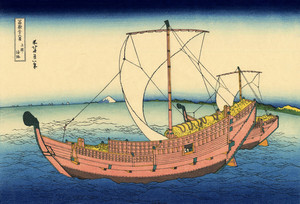
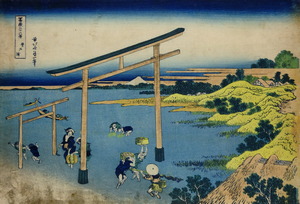
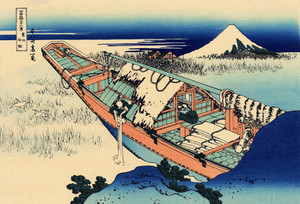
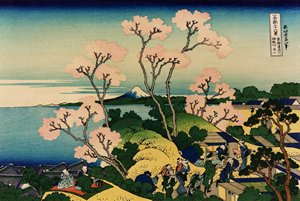
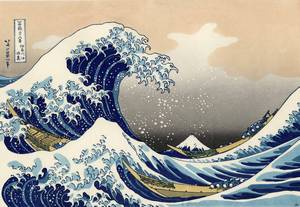
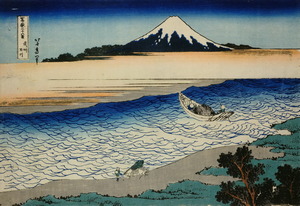
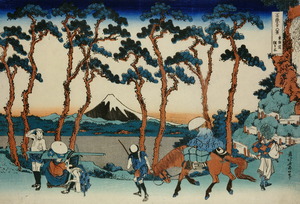
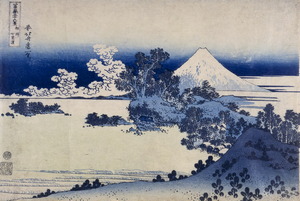
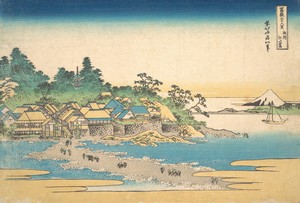
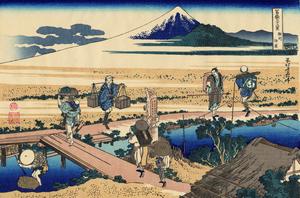
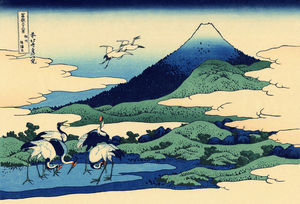
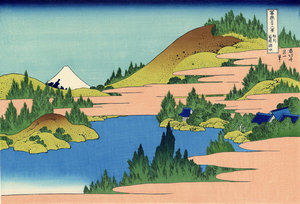
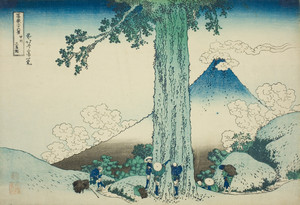
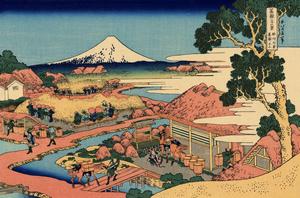
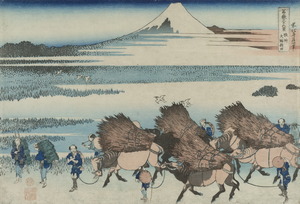
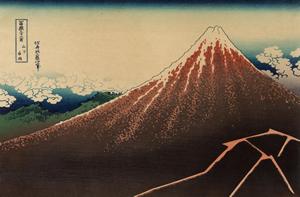
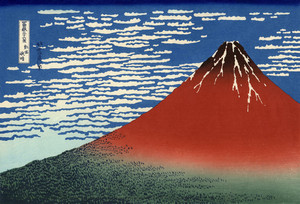
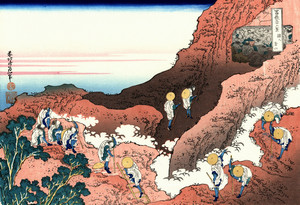
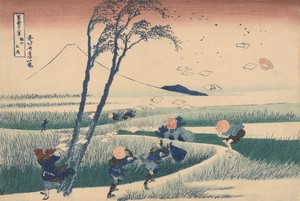
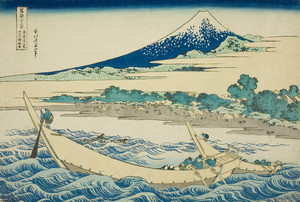
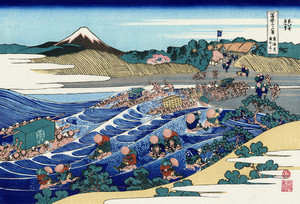
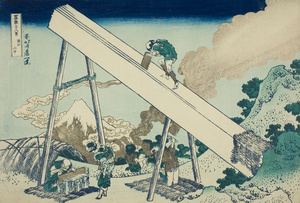
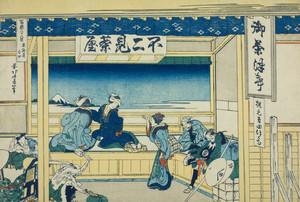
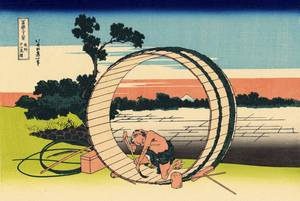
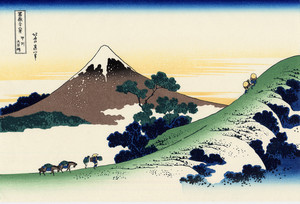
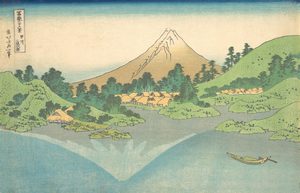
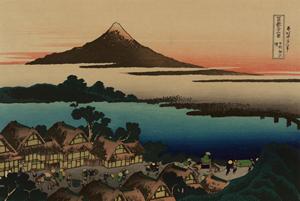
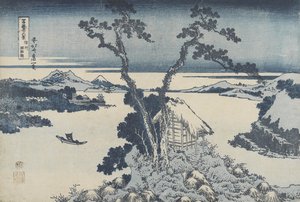
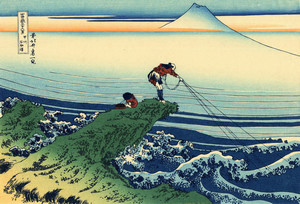
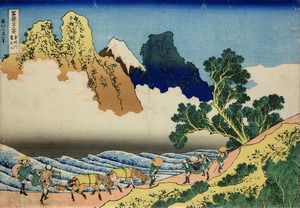




Комментарии
Добавить комментарий